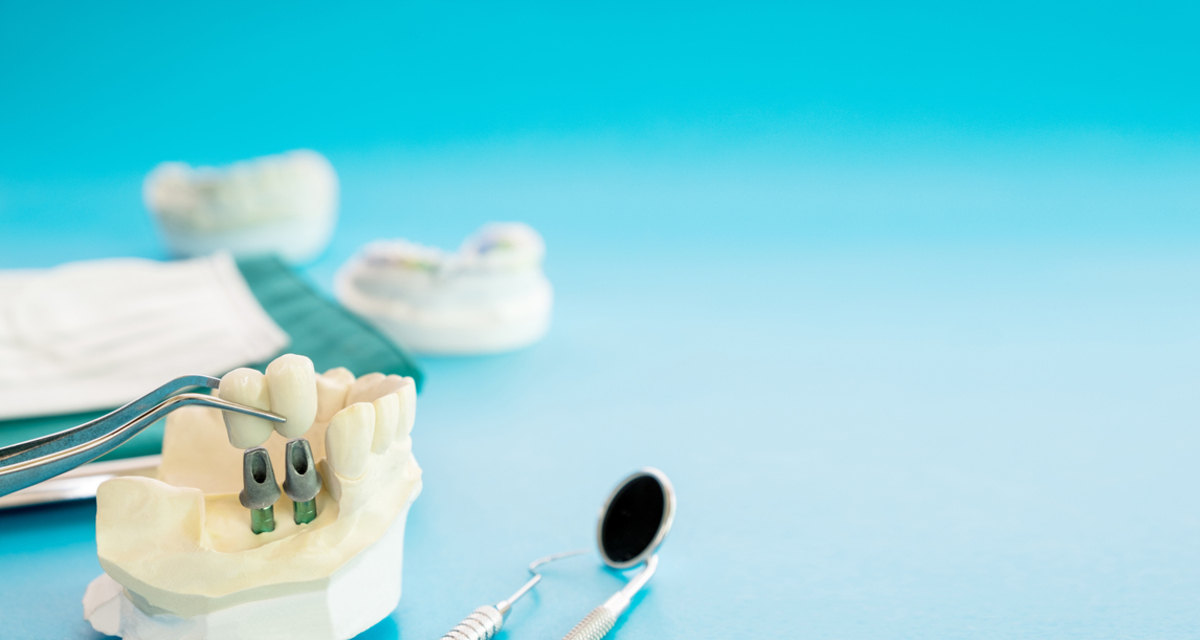Dental implant surgery has traditionally required the elevation of a flap, which means using a blade to make a cut in the gums and then lift them up to expose the bone. While this procedure is carried out under local anesthesia, it is pretty invasive by today’s standards
Now, however, flapless protocols where the entire dental implant procedure can be carried out without the use of a blade at all have become quite popular. This process has advantages and disadvantages — as well as some limitations that make it difficult for flapless surgery to be carried out in every case.

Flaps in dental implants: How does it work?
Traditional implant surgery is carried out after elevation of a flap of tissue at the site of the missing teeth.
The surgeon will numb the area with a local anesthetic. And then, using a surgical blade, they incise the tissue until reaching the underlying bone. A couple of relieving incisions are given so that the gums can be separated from the bone below and folded away to a side. This allows the dentist to see the jaw bone clearly and select the precise site at which a dental implant can be placed.
What about flapless implants
This is a less invasive method of placing a dental implant. The implant is directly placed through the gums without incising them. The surgeon may use something known as a tissue punch to cut a small hole in the gum. The bone is drilled through this hole and subsequently, the implant screw is placed.
Are flapless implants better?
Flapless implants are more convenient for the dentist as well as the patient:
- Since no incision is needed, and the implant is placed through the gums, there is no need for the surgeon to apply stitches. This reduces the patient’s post-operative discomfort and visits.
- There are reduced chances of bleeding during and after the surgery. Thus, flapless implants are a better choice in patients suffering from bleeding disorders.
- Also, sometimes it’s difficult to maintain good hygiene at the surgery site due to the presence of stitches. Flapless implants eliminate this problem.
- Studies have shown that there is less bone lost postoperatively in flapless implants when compared to flap implants. This makes them a better choice in cases like mandibular implant-supported dentures, where the height of the bone is already compromised.
- Patients report less post-operative pain, discomfort, or complications after successfully performed flapless dental implant surgery.
Can all implants be placed flaplessly?
Flapless implants are not possible in all cases.
In certain cases, the jaw bone is very thin near the gums, known as "knife-edge ridges". In such cases, to achieve a better surgical and prosthetic outcome, the bone has to be flattened using the surgical drill in order to provide a desirable width of the bone. Such cases require the surgeon to raise the flap in order to access the bone to have proper visualization of the surgical site. Cases in which grafting or other accessory procedures need to be carried out may also not be possible with a flapless approach.
Also, flapless implants require proper knowledge of the bone anatomy, studied through 3D models and CBCT of the surgical site. It is essentially flying blind and requires a certain amount of expertise to be carried out. The surgeon needs to be confident and experienced enough to carry out the procedure.
Where can flapless implants be used?
Flapless implants were generally used in jaws which have a wide, even bone which does not require any modifications during placement of the implant screws. Now, however, the number of cases that can be treated with this protocol is growing wider every day, as guided surgery becomes more common and dependable.
What are surgical stents?
Flapless implants, when placed with the help of surgical stents, give a more predictable outcome. Surgical stents also minimize the probability of complications related to the angulation and depth of the screw. A surgical stent is made by 3D printing using software to virtually plan the angulation and site of implant placement using the CBCT of a patient’s jaw.
This stent is fixed to the jaw with the help of bone tacks. The surgeon then uses the implant drill to punch through the gums and into the bone using the slots in the stent.
Advantages of flap implant placement over flapless implants
Flap implants provide the surgeon with an opportunity to remodel the gums and underlying bone according to the patient's functional and esthetic needs. This makes them a better choice in placing implants in the aesthetic zone, i.e. upper and lower front region. Flap implants also reduce operator error as the surgeon has good visibility of the surgical site.
When the surgeon is planning to replace all the teeth in any one or both the jaws, using multiple implants, surgery is preferably carried out after raising the flap so that the surgeon has a clear view of the field and can modify the site and angulation of the implant as demanded by the clinical situation, avoiding vital anatomic structures. Also, any other augmenting procedure like sinus lift or bone grafting can be done simultaneously.


Your thoughts on this